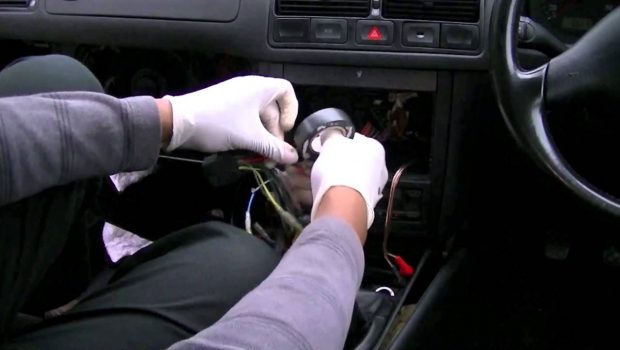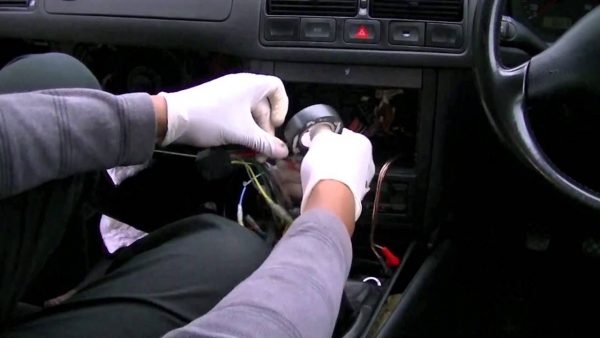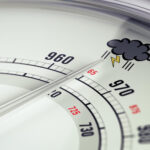How to Put a Tracker on a Vehicle
Sometimes it is just good to know where someone has been. Teens are immature by definition and are prone to making decisions that are rather dumb and reckless, like speeding. Speeding is dangerous, of course: just look at the physics. As the energy of a moving object increases with the square of the velocity, an object, masses being equal, moving at twice your speed has four times as much energy (two squared) as you. This energy needs to be dissipated before the object comes to a stop, and this is why car accidents at high speed are so deadly.
GPS tracking is a solution that allows you to always know where your teen has been, including knowing whether or not they have been speeding. Using an advanced form of the functionality present in our smartphones, GPS trackers can be discreetly placed in a car and can track its movements and, if desired, its speed. This makes GPS tracking ideal for asset tracking in general, from knowing the locations of any vehicle at all times, to understanding the exact driving profile of high-risk drivers.
Why use GPS tracking?
The GPS (Global Positioning System) has a variety of applications. Accessible pretty much everywhere, this system of satellites orbiting thousands of miles above the surface of the planet provides an accurate means to track your position anywhere on Earth, provided you have a GPS receiver that can communicate with the satellite network. Basic GPS receivers can offer accuracies down to one yard, while more expensive systems are available that can provide accuracies to within an inch. GPS is now commonplace in cars and on our smartphones, suggesting the best route to follow to reach our designated locations.
GPS tracking solutions were originally designed for the US military but is now the primary navigational system used by maritime traffic and aircraft across the planet. Scientists also use GPS for its precision timing capability and position information. The incredible usefulness of GPS’s biggest merits has spread down to generic asset tracking. If you own or operate a fleet of vehicles, you can monitor their location, even in real-time. And GPS tracking of a teen driver is no different than GPS tracking of a plane or a boat: simply mount a receiver inside the vehicle, and as long as it has power (the units come with batteries and can last a long time), it will transmit GPS information to a log that can be accessed remotely. To know more about GPS tracking and the best trackers available in the market, you can visit Infiniti Tracking.
The ability to track speed in real-time requires a lot more information from the satellite network, which is why units capable of doing so tend to be larger and much more expensive, as opposed to smaller units that request information once several minutes.
How does GPS work?
Before there was GPS, there was Navstar: a satellite-based radio-navigation system owned by the US government and operated by the United States Air Force. This global navigation satellite system provides geolocation and time information to a GPS receiver anywhere the signal can reach.
Places that a GPS device does not work include the inside of buildings, within caves underground, and underwater. GPS requires at least three satellites being overhead at any given time, though there are typically four for redundancy and backup. The satellites receive a geolocation request from a receiver, and because of the fact that the speed of light is finite and the orbits of the satellites are known, a unique location can be determined for the signal. This process is an extension of the principle of triangulation, referring to how, in the three-dimensional world that we live in, we need three unique points to reference our place in it. For example, if there were only two GPS satellites above you, the system would know your location along a line, but you could be anywhere along that line.
Careful measurement of the signals also allows for the user’s velocity to be known, but this requires more precision and more calculations to be done. The GPS does not require the user to transmit any data, and only keeps track of your location by answering queries from the GPS transmitter while operating independently of any telephone or Internet reception. However, these technologies can enhance the usefulness of a GPS device’s positioning information.
How to hide a GPS tracking device
Many factors need to be considered when you place a GPS tracking device. If the visibility of the device is not a concern, then mounting it to your dashboard, clipping it to your sun visor, or firmly attaching it to the roof of your vehicle are the best options, as these locations have a clear line of sight to the sky and consequently provide the clearest path for direct communication with the satellites. However, if the discretion of the hiding place for the GPS tracker is important, here are a couple of places to consider mounting your GPS tracking device:
- Under the vehicle: A common trope in movies, this is the most discreet way to hide a GPS tracker. With the correct placement, the signal will bounce off the road and into the sky where it can be detected by the GPS satellites. Proper care needs to be taken to ensure the device is protected from the elements and is not blocked by anything made of metal, which will cut off its signals. You’ll need to make sure it is very sturdily attached as well, in order to guarantee a bumpy road or typical operating vibrations don’t knock it off.
- Inside the dashboard: Care needs to be taken with the installation of a GPS tracker inside the dashboard. However, if a GPS tracker is hidden here, it is unlikely to be discovered. Since dashboards are almost never metal, the signals to the GPS satellites will pass through.
- Inside the bumper: The bumper is a great place to hide your tracker, but you’ll need to be careful. Many new cars have bumper covers made of plastic or fiberglass, which are ideal locations to mount a tracking device. Don’t try to remove the bumper, as doing so is labor-intensive and prone to damaging the vehicle. Using Velcro to attach it is the most convenient method, though keep in mind that this will not work if the bumper is entirely metal.
- Under a seat: Under the passenger (or driver) seat is a simple and common location for hiding a GPS tracking device. Care needs to be taken when attempting this, too, as the metal in the frame of the seat can disrupt the signals.

















